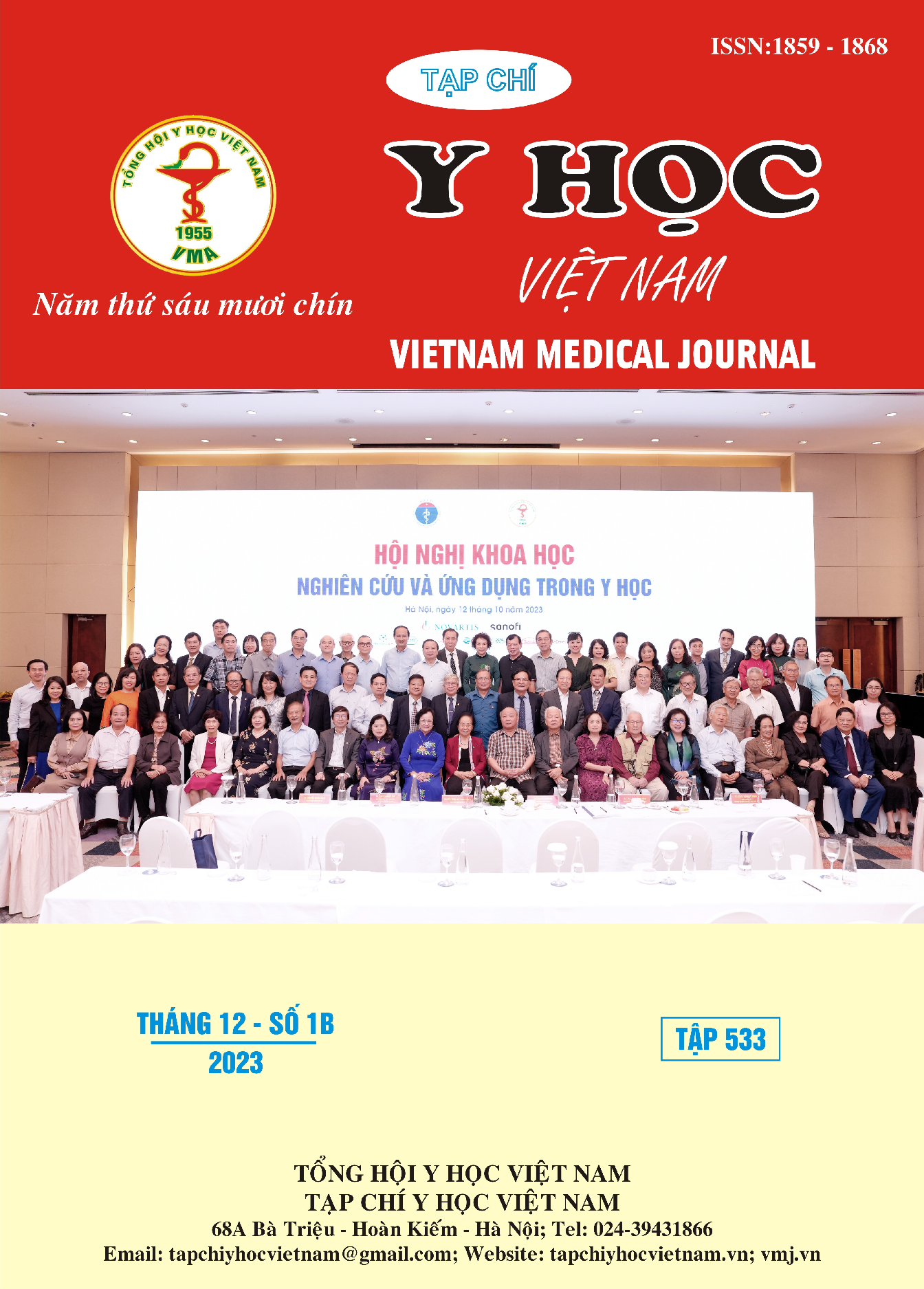CLINICAL AND HISTOLOGICAL FEATURES OF THE LESIONS PRE-CANCER AND OCULAR SURFACE SQUAMOUS CELL CARCINOMA
Main Article Content
Abstract
Objective: Describe the clinical and histopathological characteristics of precancerous lesions and ocular surface squamous cell carcinoma. Research subjects and methods: Retrospective descriptive study on 69 medical records of ocular surface tumors that are precancerous lesions and squamous cell carcinomas treated at the VietNam National Eye Hospital since April 2018 to the end of March 2023. Results: The study was conducted on 69 patients, including 50 men and 19 women. The average age was 65.78 ± 15.28 years old. There were 69 patients with disease in one eye (100%) and no patients with disease in both eyes (0%). The rate of pre-cancerous lesions of ocular surface squamous cell carcinoma is 43.5%, squamous cell carcinomas lesions is 56.5%. The location of lesions on ocular surface is mainly in the limbal area with 87%. The most common lesion morphology is the papillary form with 49.3%, the papillary form has a higher degree of malignancy than the other two forms. The duration of illness is proportional to the degree of malignancy (p<0.05) and both have the same rate. Consistent with lesion size (p<0.05). Lesion width is proportional to malignancy (p<0.05) but has no relationship with lesion duration (p>0.05). The degree of corneal invasion has no relationship with the malignancy of the lesion (p>0.05). Conclusion: The disease mainly occurs in men and the elderly, usually occurs in 1 eye, the location of damage is mostly in the corneal margin area. The papillary form is more common and more malignant than the other two forms. Research shows that there is a clinical relevance such as: illness duration is proportional to lesion size; The relationship between clinical and malignancy is: malignancy is proportional to disease duration, size and width of the lesion.
Article Details
Keywords
precancerous, ocular surface squamous cell carcinoma.
References
2. Nasreen A. Syed, et al (2020–2021). Section 04: Ophthalmic Pathology and Intraocular Tumor. Basic and Clinical Science CourseTM.
3. Lee G.A. and Hirst L.W. (1995). Ocular surface squamous neoplasia. Surv Ophthalmol, 39(6), 429–450.
4. Nguyễn Thu Thủy (2012), NC chẩn đoán và điều trị u biểu mô bề mặt nhãn cầu, Luận văn tiến sĩ Trường Đại học Y Hà Nội, 52-89.
5. Hossain R.R. and McKelvie J. (2022). Ocular surface squamous neoplasia in New Zealand: a ten-year review of incidence in the Waikato region. Eye (Lond), 36(8), 1567–1570.
6. Tunc M., Char D.H., Crawford B., et al. (1999). Intraepithelial and invasive squamous cell carcinoma of the conjunctiva: analysis of 60 cases. Br J Ophthalmol, 83(1), 98–103.
7. Gichuhi S., Sagoo M.S., Weiss H.A., et al. (2013). Epidemiology of ocular surface squamous neoplasia in Africa. Trop Med Int Health, 18(12), 1424–1443.
8. Hertle R.W., Durso F., Metzler J.P., et al. (1991). Epibulbar squamous cell carcinomas in brothers with Xeroderma pigmentosa. J Pediatr Ophthalmol Strabismus, 28(6), 350–353.


